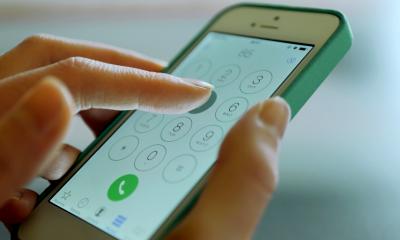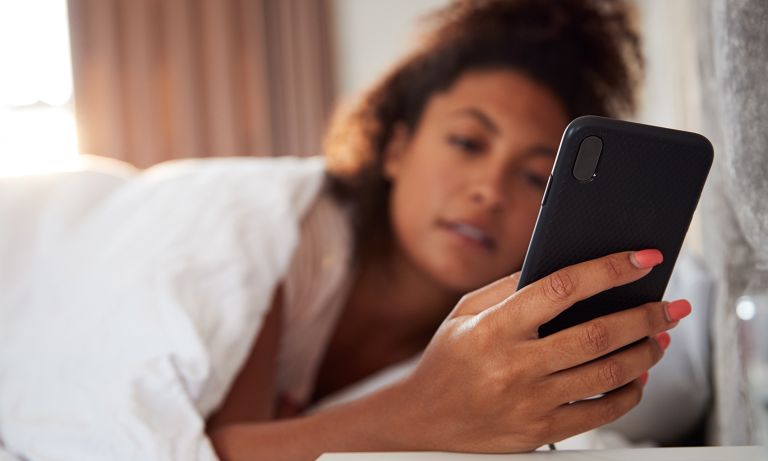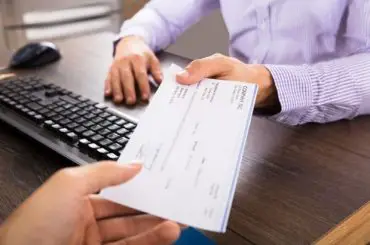Information presented on this web page is intended for informational and educational purposes only and is not meant to be taken as legal, financial, investment or tax advice. We do not accept any responsibility for any trading or investment related losses. Please review our disclaimer on before taking action based upon anything you read or see.
Checks do not come with a warning, and any errors you make when writing one might cost you money. However, after you’ve grasped the many components of a check, you’ll feel comfortable filling out, receiving, and posting paper checks. To this end, we have made this post to show you where to write a phone number on the check.
Checks feature important pre-printed information and also blank areas that should be filled in attentively and exactly each moment a check is written. Knowing where to write a mobile number on a check is important not just for writing your own checks, as well as for the reasons listed:
- Make a new check order.
- Ensure that the check orders are complete.
- Set up Instructions for direct deposit
Where to Write Phone Number on Check

Many establishments will not take a check unless it includes your phone number. Keep in mind that every bit of data you write on a check is another piece of information an identity thief might use to create an identity based on you.
Fortunately, disclosing your phone number does not pose a significant danger. While it is not best to have it written on your checks, it is OK to write it on a check if asked. Your phone number may be present in the top right corner of the check or the notes line.
This area is for writing unofficial remarks and figures on your check. This is totally at your discretion. You also use the memo line to:
- Fill in the blanks for your records.
- When paying bills, provide an account, invoice, or transaction number.
- When writing checks to friends or family, including notes.
You don’t have to write everything on the memo line. You may put extra information on the face of a check-in almost any place as long as it doesn’t conceal any crucial information. However, other than your phone number, you should not write anything on the reverse of the check.
Additional Information to Put a Phone Number on a Check

As previously said, it is critical to comprehend all your check contains. Apart from your phone number, it’s a good idea to include the following:
Information about yourself
Personal identifying details relating to the account owner usually appear in checks’ upper-left corner, virtually always pre-printed. This section usually contains the following items:
- Your chosen name
- A physical address
This data is generally either the contact details for your checking account or the contact details you want on your checks when you buy them from your institution.
If you’re concerned about privacy, you may reduce the amount of data on your checks. You can also save cash by using a post office box instead of your home address. It’s uncommon for a shop to request certain data before making a check.
They might, for example, handwrite your address. This allows them better to defend themselves in the event of check fraud.
Payee Line
In this section, you specify who will get funds from your bank account. You should write down the identity of the person or entity you want to pay, commonly known as the payee.
The payee is the only one who may transfer, cash, or approve a check to somebody else. Use the recipient’s full name rather than a pseudonym to avoid any confusion or problems for the person depositing the check. If you don’t wish to name a specific person or organization, you can pay your check to the value of “Cash.”
This, however, is problematic since the check may get into the hands of anybody, not just the intended recipient.
Dollar Box
The sum must be written in figures rather than words. Add the cost of your quantitative check-in format in the dollar box (for example, “1,180.00” instead of “one thousand one hundred and eighty”).
For safety purposes, you would like to make it as difficult as feasible for anybody to modify the quantity you input in this space. Write the digits far enough to the left as possible: a decimal and any numerals should be entered directly after the digit. Use “.00” as well for rounded dollar amounts.
Double-check the amount written down in words.
In this column, put the value of your cheque in letters (instead of using numerals). And if there’s any vacant lot prior to the actual figure you’ve drawn, use a single line to fill it in. No one will be able to alter the amount of your check as a result of this.
Cents appear as fractions of a dollar rather than entire cents on this line. Put the number of pennies above the number 100 since there are 100 cents in a dollar. If the dollar box and the sum expressed in words disagree in any way, the bank will disregard the dollar box. This is because words are more challenging to change than numbers.
Dateline
In this box, type the date. You may put a future date on the check and contact the bank if you wish to postpone the transaction. You can’t just post-dated checks and anticipate the bank delaying the transaction.
On this line, pennies show as portions of a dollar instead of whole cents. Because there are 100 cents in a dollar, place the number of pennies above the number 100. The institution will overlook the dollar box if the amount represented in words and the dollar box contradict in any manner. It’s because changing phrases is more difficult than changing numbers.
Signature line
The check is signed on the line in the bottom right-hand corner by the payer. You can compare the signature to the account holder’s autograph on file, a security feature.
The final step in writing checks is acknowledging it, which must be done when you’ve double-checked everything else. If you execute a blank check and misplace it, whoever finds it is free to fill in the holes with whatever they want.
Besides the tag line, the character “MP” may be present. It indicates that the check has a safety mechanism known as microprinting. This may be accomplished by putting a little text on the check that is not visible to the human eye.
Contact information for your bank
Your institution’s name appears on each and every check you sign. This section does not contain pertinent data such as the route number. You could merely see the bank’s logo, or you might see contact information and an address. If you receive a check, this section will tell you where all the funds will arrive from and how to transfer them.
At that banking institution, you may cash the cheque. Financial institutions, on the other extreme, are under no obligation to cash anybody’s check. They can require paying or decline to cash it if you are not a client.
ABA Routing Number (MICR Format)
The reference number of your institution, which might be found at the bottom left of the check, serves as an “address.” Whenever you pay a bill, other institutions might call your bank and use that number to withdraw funds from your account.
The routing number at the bottom of the check is written in a different font and has a different link, but it includes the same information as the segmental ABA. “Magnetic Ink Character Recognition,” or MICR, is an acronym for “Magnetic Ink Character Recognition.” This makes it simple for systems to read and execute checks.
Your account number
Your account number may also be found on the bottom of a check, which employs MICR encryption. A check will usually include three numbers on the bottom, with your bank details in the middle.
Since some checks have a different configuration than many others, double-check your bank details. For instance, corporate checks and checks created using an internet payment platform have a slightly different format. Finding your bank details by searching for the indication is a great place to start. Your account number will appear even before that sign.
Frequently Asked Questions
Can I write my phone number on my check?
Yes. You can write your phone number on your check through the tips highlighted above.
Is it necessary for me to include my address on my checks?
No. It is not necessary to include an address on checks. Your account and routing information are required so that the bank may withdraw monies from your checking account. As a result, checking your location on them is no longer essential.
What is the procedure for writing a check?
You may write a check by following the instructions below:
- Make a date. Write the date in month/day/year format in the upper right-hand corner of the check.
- Write the recipient’s name.
- Substitute numbers for the amount.
- In other words, write the sum.
- Make a note of the purpose of the check.
- Write your name on a piece of paper.
Should my checks include my home phone number?
No. Instead of your home phone number, it’s advisable to write your work phone number on your checks.
Conclusion
In conclusion, checks come with various merits. And if you desire more help on where to write a phone number on the check, the tips above will aid you immensely.




